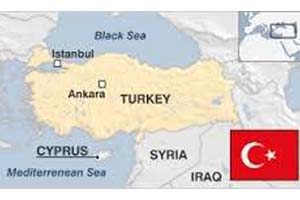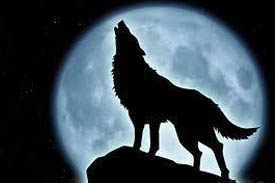Rifles: A Real Firearm, Part 2
 So much hyperbole from a tactical standpoint exists in advertising to influence the buying power of the citizen, he or she, is quite bamboozled into para-military, militia thinking. This, I think is wrong. Our goal is to define hunting rifles for legal game-not shooting at one another. Let us further refine our inquiry into that which may assist you in finding what meets your needs, for there are many different situations and therefore different applications to what is best.
So much hyperbole from a tactical standpoint exists in advertising to influence the buying power of the citizen, he or she, is quite bamboozled into para-military, militia thinking. This, I think is wrong. Our goal is to define hunting rifles for legal game-not shooting at one another. Let us further refine our inquiry into that which may assist you in finding what meets your needs, for there are many different situations and therefore different applications to what is best.
This statement will certainly upset many younger readers, who waving their 1911 pistols and chanting what is necessary to defend themselves may be somewhat correct, for we recall in our article on handguns, that they are for personal defense; few merit consideration for hunting.
As an example were I to hunt a Kodiak Bear, an animal as big as a Mack dump truck with a handgun-of any size- I would be squashed and dragged off in the brush. A rifle, of say, .338 Winchester Magnum would be the lightest rifle to use; a .375 Magnum would be better. Now with this statement there arises another crowd of dissent that many great hunters in the “gun” magazines hunt with big bore pistols quite successfully and others hunt these Huge bear successfully with .22 LR. Yes, we will read about that type of journalism and we must recall this type of journalism has been going on, that I am aware of, since Theodore Roosevelt went to Africa-Winchester Arms and the lot promoting his use of their rifles. I think it is safe to say that those who do this are very professional hunter/writers, and behind him are the cameraman and a backup shootist with a rifle
The common game we are addressing in this rifle series for Virginia hunting is White Tailed Eastern Deer, Elk, and wild Boar. I am excluding the endangered Black Bear as large game. Small game, usually thought as “varmints”, would be ground hogs, raccoons, fox, bobcat, coyotes, etc. Smaller game would include rabbits and squirrels. Plinkers are rats.
Do understand that I am an extreme conservationist, and I think, and believe that ALL life has a purpose and is part of God’s bigger plan. I have no need of actually hunting to prove my prowess. The small deer herd on my land lives safely. I do not hunt for sport-only for survival, and maybe target shooting on occasion.
Choosing the caliber.
This discussion will focus on common gun calibers and avoiding the myriad promotional newer calibers on the market today for the simple reason I addressed in “Handguns”-you have availability of conventional ammunition. This is not to discount new calibers as they may even be superior to an older counterpart-it is just the availability that strikes me as important.
A .22 caliber RIMFIRE cartridge may be had in BB, CB, .22Short, .22Long, or .22(LR) Long Rifle. BB and CB are usually found in carnival target galleries as you may be firing at a few feet and they pose little risk-much like a BB gun. .22 shorts are still popular for plinking at rats, or basement targets. .22 Long is hard to fine and the upgrade to a .22 LR was made a century ago for small game.
Currently you may find the .22 cartridge in sub sonic-used in a silencer, or targets with reduced noise signature. Standard loads do best with older rifles of a “long rifle twist”, the hyper velocity loads better with a more modern rifle with a shorter twist.
Standard loads usually have a bullet of 40-grain weight. To achieve additional velocity-therefore energy- a hyper velocity bullet is reduced to 37grains in weight.
The velocity and energy, of an ammunition manufacturers bullet, at the muzzle, is determined by a fixed factory test barrel. A chronograph measures such data. Your actual performance may be further enhanced by purchasing your own chronograph (about $100.00), and measuring the ideal manufacturer cartridges at different temperature gradients, range, and humidity factors. There is a difference in performance in all cartridges and a comparison can make the difference between a hole in one and hitting the can-which is not what a “shootist” subscribes to.
The small .22LR is a powerful hunting caliber but the impact energy must be at least 150 lbs. at the given impact range point to effect penetration through the bone of a headshot. Note that goats, deer and elk bone structure can be penetrated but is best done through the eye socket or ear canal. Pigs/boars are often shot with a .22 LR between the eyes to stun them before aortic incision. (Farm pigs). However a 1000 lb. boar charging you really requires stopping power. Handgun popularity is usually .44 Magnums. Varmints do well with neck-spinal hits; the reaction to the nervous system is painless and instantaneous except with the cat family, which requires a headshot; best focused at the nose bridge directly between the eyes as the brain case is low in the skull. I mention this, as there seems to be a growing number of feral, bobcat and Cougar pestering remote homesteads.
Considering that a .22LR energy drops off considerably down range and is thought best for rabbits and squirrels at about 75 feet. You can upgrade to a .22 magnum. This will increase your muzzle energy 3X depending upon weather you are firing a standard magnum load, or a magnum Plus load such as a CCI IV-my favorite.
A note of caution with the .22LR mini-magnums and .22 magnums of ANY high pressure loads. Semi-automatics generally are manufactured for standard loads and the use of high-pressure loads- even the little .22LR will result in the firearm becoming damaged and dangerous to you. My personal negative experience in this regard is with the AMT.22 Magnum and Taurus .22 LR semi-automatic pocket pistols. This is a main reason to choose a revolver in pistols and a single shot in rifles, which can contain the excess pressures generated (AGAIN-Read the manufacturers enclosed information nomenclature)-except that the New England Arms has a reputation and caution for not using high-pressure loads. Always READ the manufacturers load recommendations for if your handgun or rifle breech explodes you can lose your hand, eyes and sustain other injuries. If you do not have a copy you can write or e-mail the manufacturer, giving the rifle nomenclature and serial number for a reply. AGAIN- always wear protective eye protection and the use of shooters gloves is recommended.)
A .22LR may give you 150 feet of critical accuracy, a .22 magnum 120 yards of accuracy, but the bullet will travel over a mile and can be a danger to others down range. Always ensure you have a backstop for the line of sight. The further these small bullets travel, the faster they drop off in velocity and energy at impact becomes less. The trajectory is rather like a big curve with gravity pulling at every split second of bullet flight. The same ballistic rule applies to larger calibers therefore you find the optimum range point before rapid drop off.
The .223 (5.56 Nato) is a military designed cartridge for full automatic fire and remains a poor second in varmint hunting to the .222 Remington. The configuration of the .222 does not led it self to military firearms and is becoming harder to find as is the .22 Hornet. Both are not recommended because of the obsolesces. The .223 will grow in popularity as it has already been ingrained into the civilian thinking of plentiful and functional-but it remains a poor cartridge.
Moving up to increased range, and larger game in the .22 caliber reference is the consistently popular .22-250, which will give you very good accuracy out to 500 yard. This is a favorite for coyote varmint hunters.
Moving up a bit more is the 6MMPPC, a Euro popular caliber used in match shooting in cross-country ski events- a rigorous sport. This is the most accurate caliber available on the market. Unfortunately it is not always available nor is their much variance in the match loads so the use of a .243 Remington is a fair compromise. Police tactical units often select this caliber as well as varmint hunters for range comparable with the .22-250, but having a slightly heavier grain weights available for more down range impact energy such as deer size targets. On a personal note I think the 100-grain bullet is a bit light for deer and I would upgrade to a .264 Remington.
For varmint and deer size targets, a favorite with sheep and antelope hunters is the 25.06. This caliber developed in the 1920’s remains an unmatched distance firearm, necked down from the 30,06. Three is more bullet grain weight and accuracy out to 700 yards.
Now we are reaching into the heavy weights of the .270, 7mm Magnum, .308, 30.06 and 300 Winchester Magnum. The optimum zero range point before gravity pulls the bullet down, ever so lightly is an average of 200 yards. These are quite suitable for the largest of game in the lower 48 states with a wide assortment of popular grain weights and powder options from standard to ultra powerful cartridges.
There are a number of 100-year-old 8mm, 7×57 Spanish, 7.65 Argentine, 6.5 Swedish, 30.06, 270, .303 British, and the venerable .32 Special, 38.55, and 30-30 calibers. All tremendous calibers of flat trajectory, long range and a worry by ammunition makers who UNDER- load the powder to effect a safer low pressure in these chambers fearing age of the firearm and law suits. To understand this a standard load 30.06 generates 55,000 lbs. PSI internal pressure in a 26” barrel. Most loads purchased may be less pressure and less energy down range. You have to know your ammunition specifications. Contacting the manufacturer with the “lot” number on the box may help. Military ammunition has a higher pressure point, and now is loaded with depleted uranium lead bullets. These are removed and it is refilled with civilian powder and a civilian applicable bullet. The problem with military re-converted ammunition is also the primer, which is usually corrosive, requiring end of the day thorough cleaning. If you have a good older converted military to civilian sported rifle in these calibers you can purchase NORMA ammunition with assurance. This underscores the importance with all ammunition that you zero the firearm and have access to a coronagraph. More on this later. Save the brass cases. Military brass is slightly thicker than civilian brass, depending on who makes it. This makes for sometimes re-sizing headaches in re-loading at home.
Next week we will start to cover more on ammunition, internal ballistics, and rifle types.
 The lead in photo is of Alvin C. York, famed WW1 hero, and the most decorated soldier in that era that also received the Medal of Honor and other medals of valor. He captured 132 German Soldiers, 25 machine guns and shot single handedly 25 German Solders with the 1903 Springfield rifle. Movies, books and much tribute herald this great pacifist American man from Tennesee.
The lead in photo is of Alvin C. York, famed WW1 hero, and the most decorated soldier in that era that also received the Medal of Honor and other medals of valor. He captured 132 German Soldiers, 25 machine guns and shot single handedly 25 German Solders with the 1903 Springfield rifle. Movies, books and much tribute herald this great pacifist American man from Tennesee.
God Bless
Copyright: 2009, Back2theLand.com, Mark Steel



